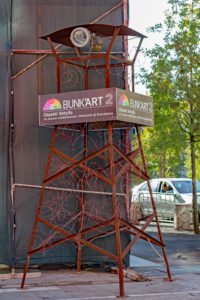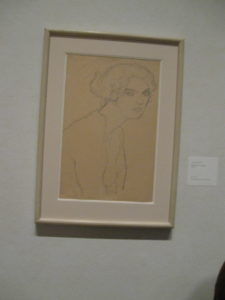We had seen their works in Vienna and at other exhibitions in London. This was a different aspect of the art of the Secession: two collaborative artists, a generation apart, working in the most intimate medium available.
Klimt’s life-sized canvases resplendent in gold are famous, but his preparatory drawings for some of them are fascinating. If few of the notorious Schiele portraits of cadaverous nudes were displayed there were delicate pencil and wash images of children, his wife and other family members and friends. There was also one of his landscapes and some brilliant chrysanthemum paintings – an altogether different presentation of his talent.
The exhibition also reveals the nature of their collaboration on a magazine illustrating the aims of Secession and poster designs for its exhibitions. In the small Sackler Galleries it could have been claustrophobic but restricted admission numbers allowed plenty of time and space – quite the opposite of a blockbuster show.
If in general Schiele’s drawings were more impressive than Klimt’s it can be explained by their different purposes. Most of Klimt’s drawings seemed to be preparatory, as with the portraits in the same series as ‘The Kiss’. Schiele’s, while they may have prepared the way for paintings, were relatively finished works, some complete in themselves. It is fair to note, however, that one of the finest examples in the whole display was a chalk portrait by Klimt that drew the viewer in towards minute study. A photograph does not do it justice.
Unlike the aforementioned blockbusters this was a contemplative experience for every visitor, one for which we should be deeply grateful to the collaboration between the Royal Academy and the Albertina Museum in Vienna, which made it possible.









